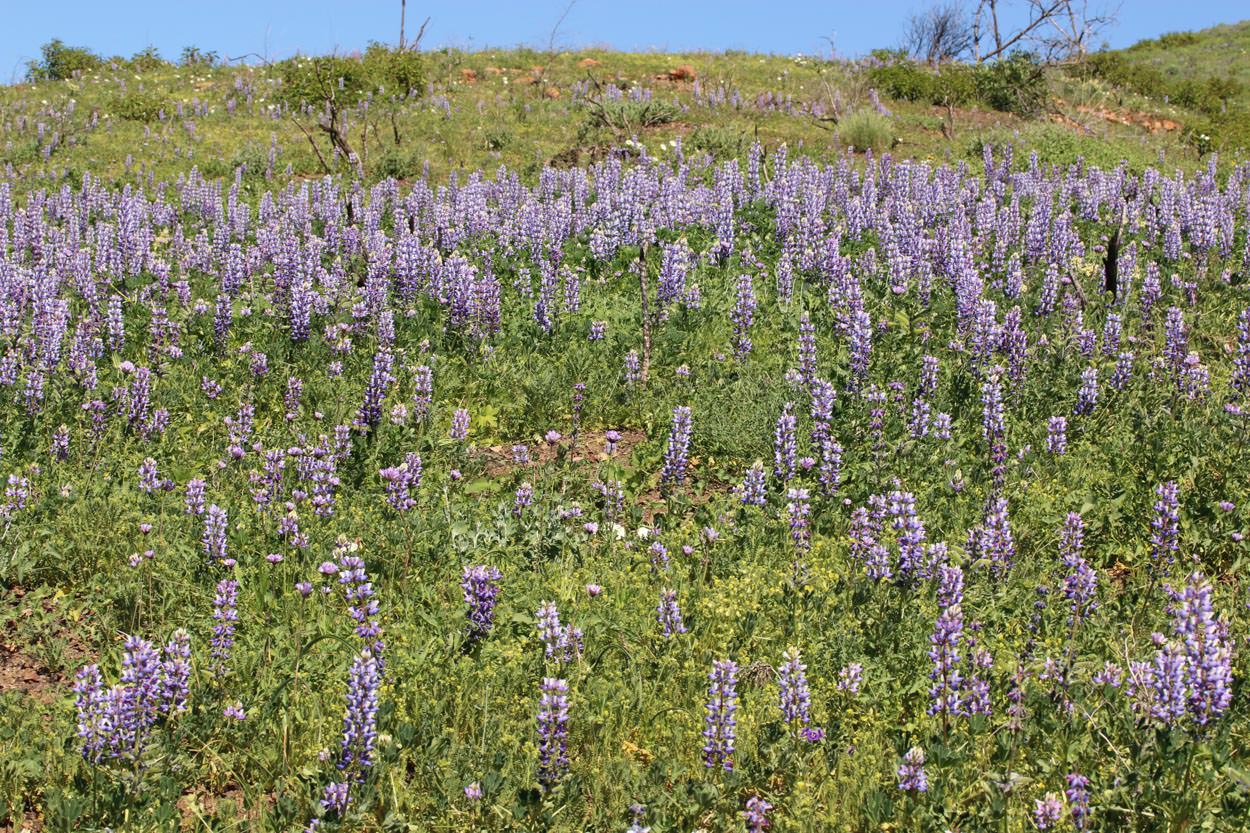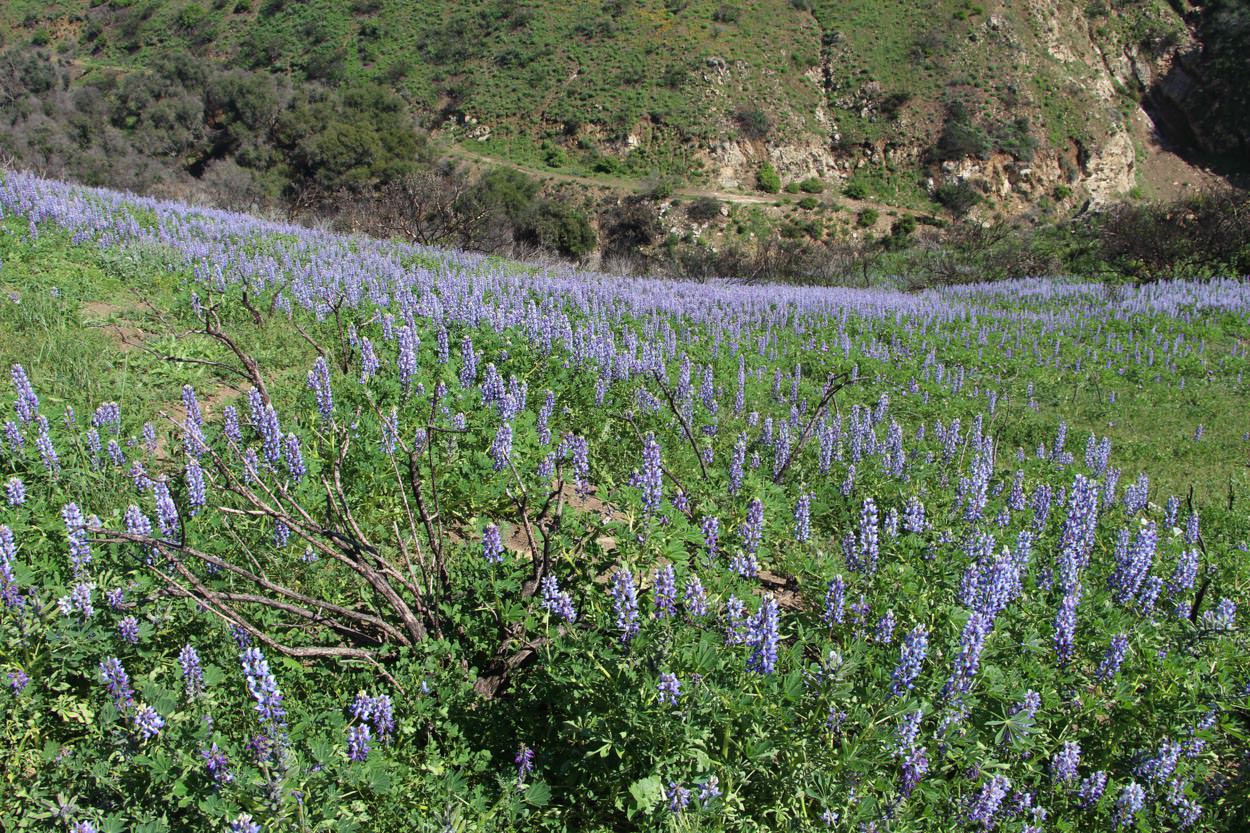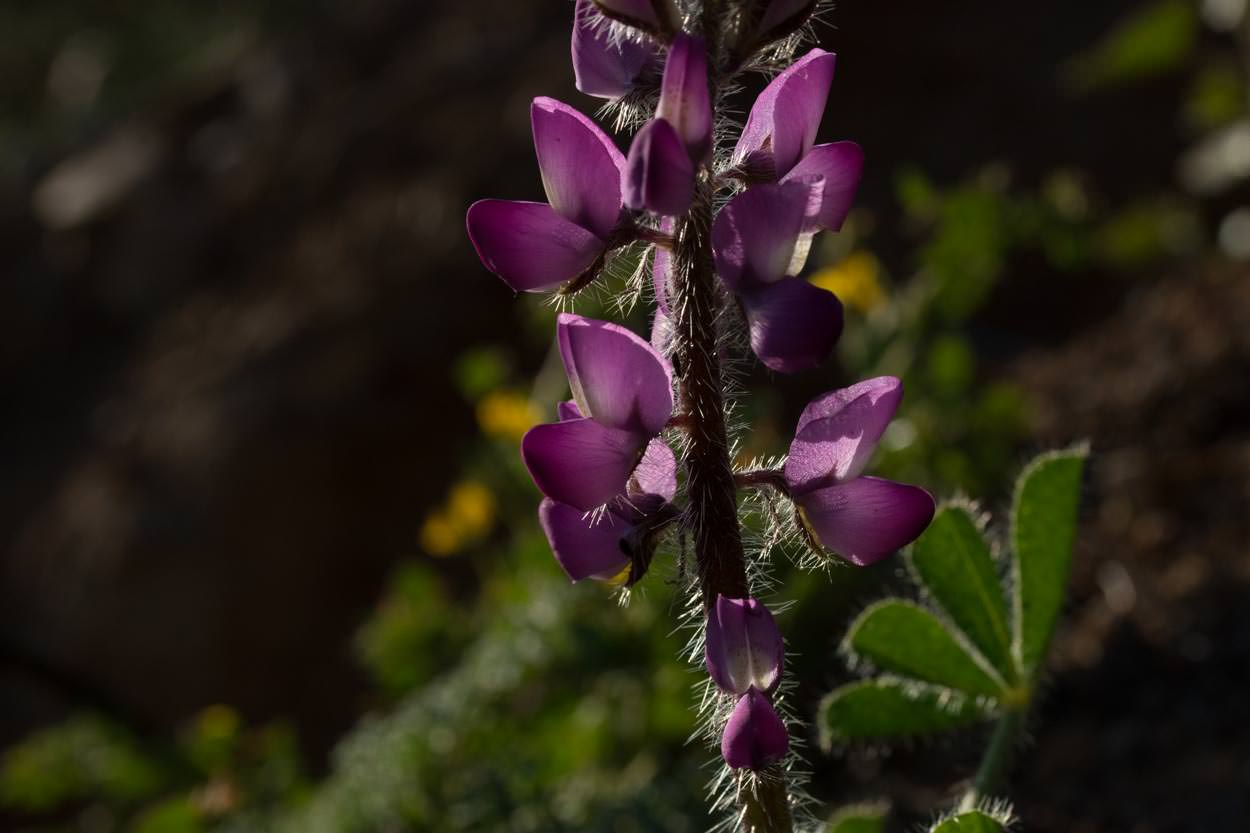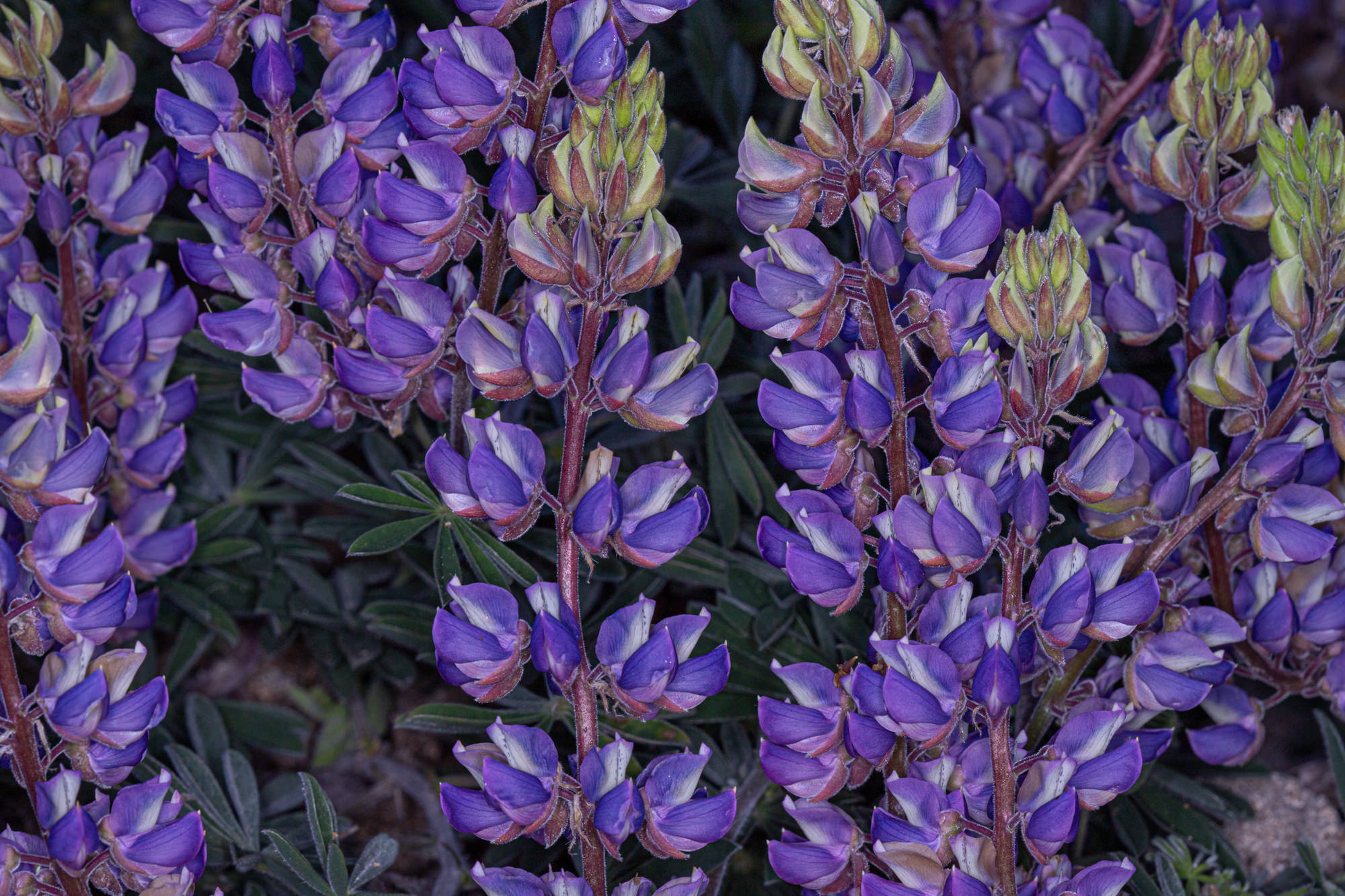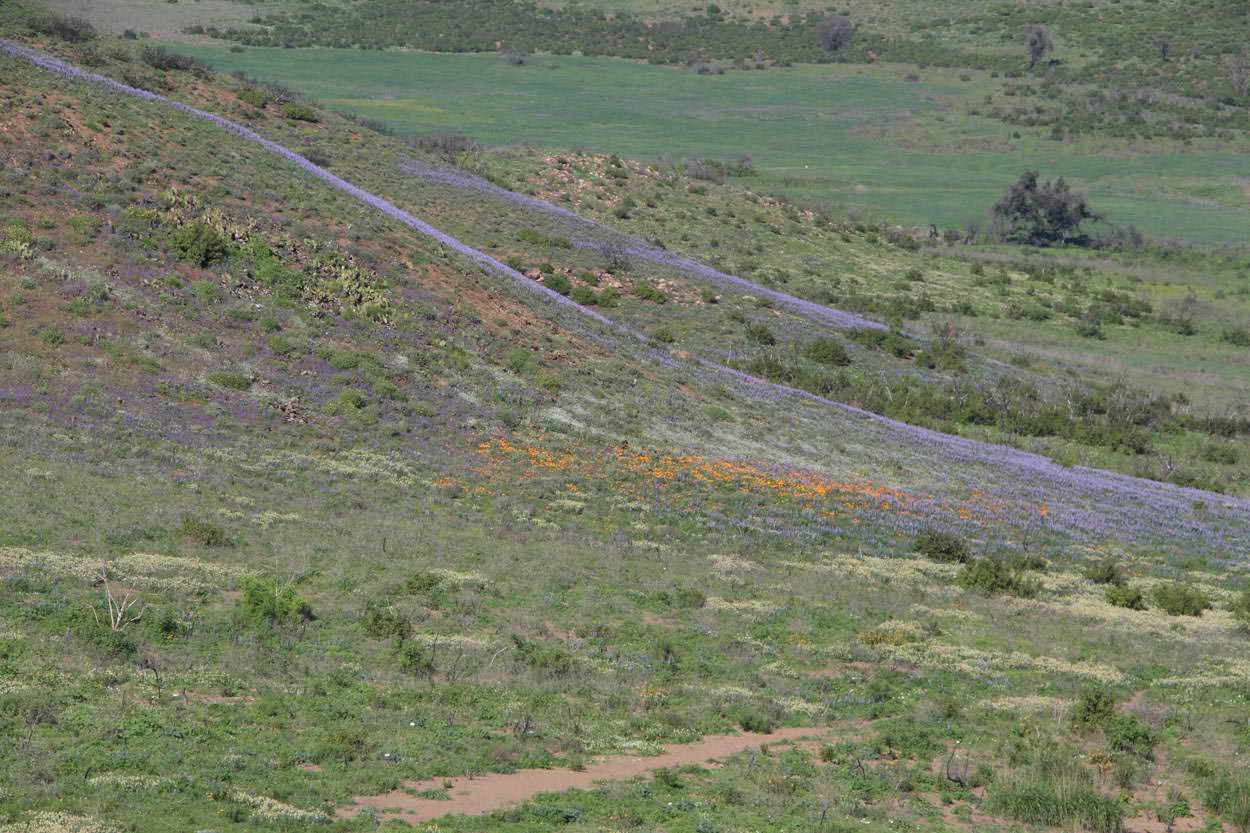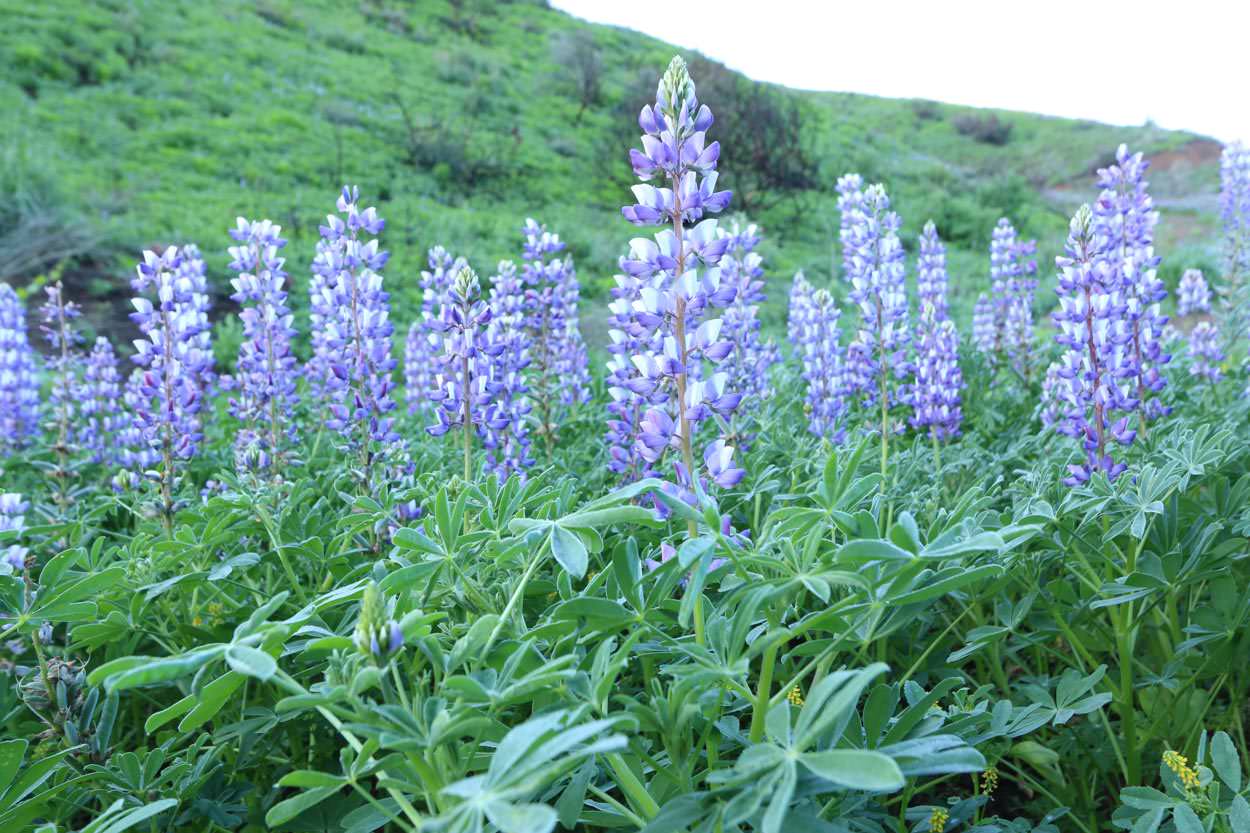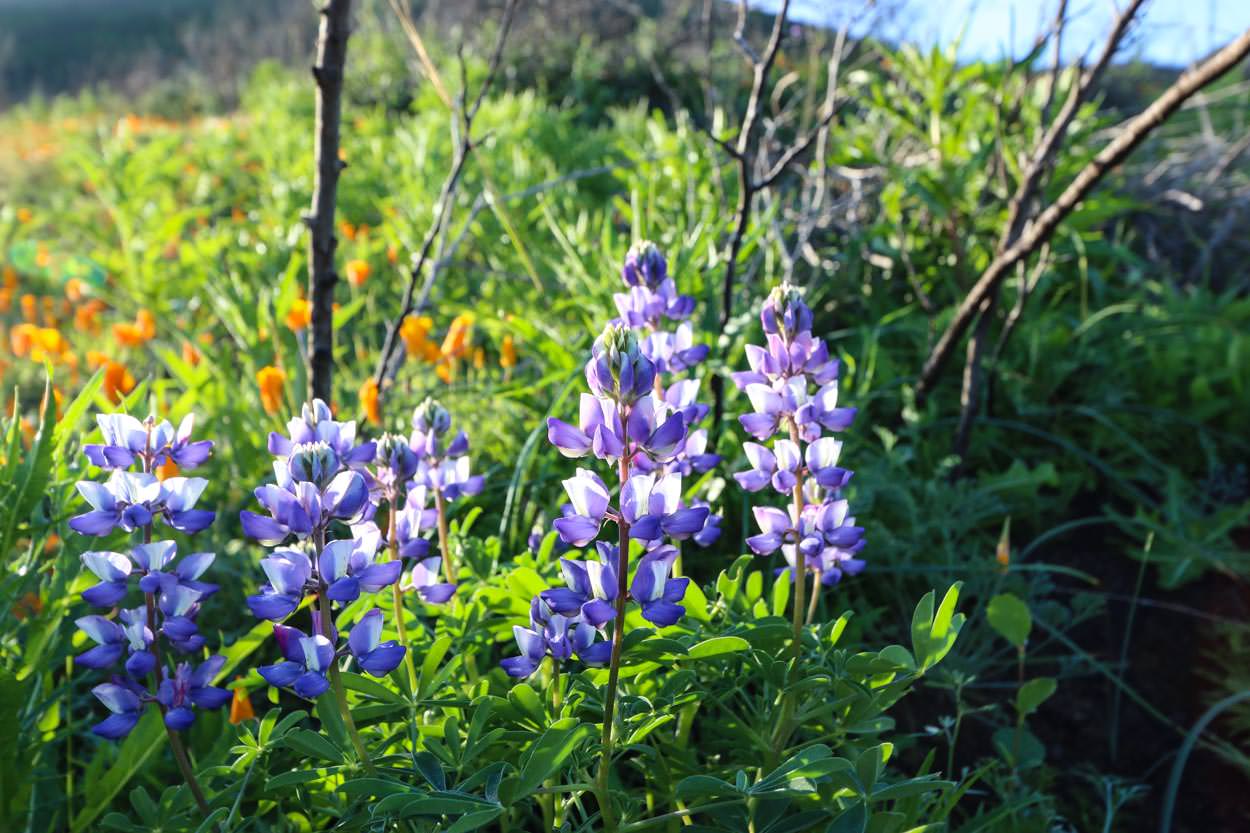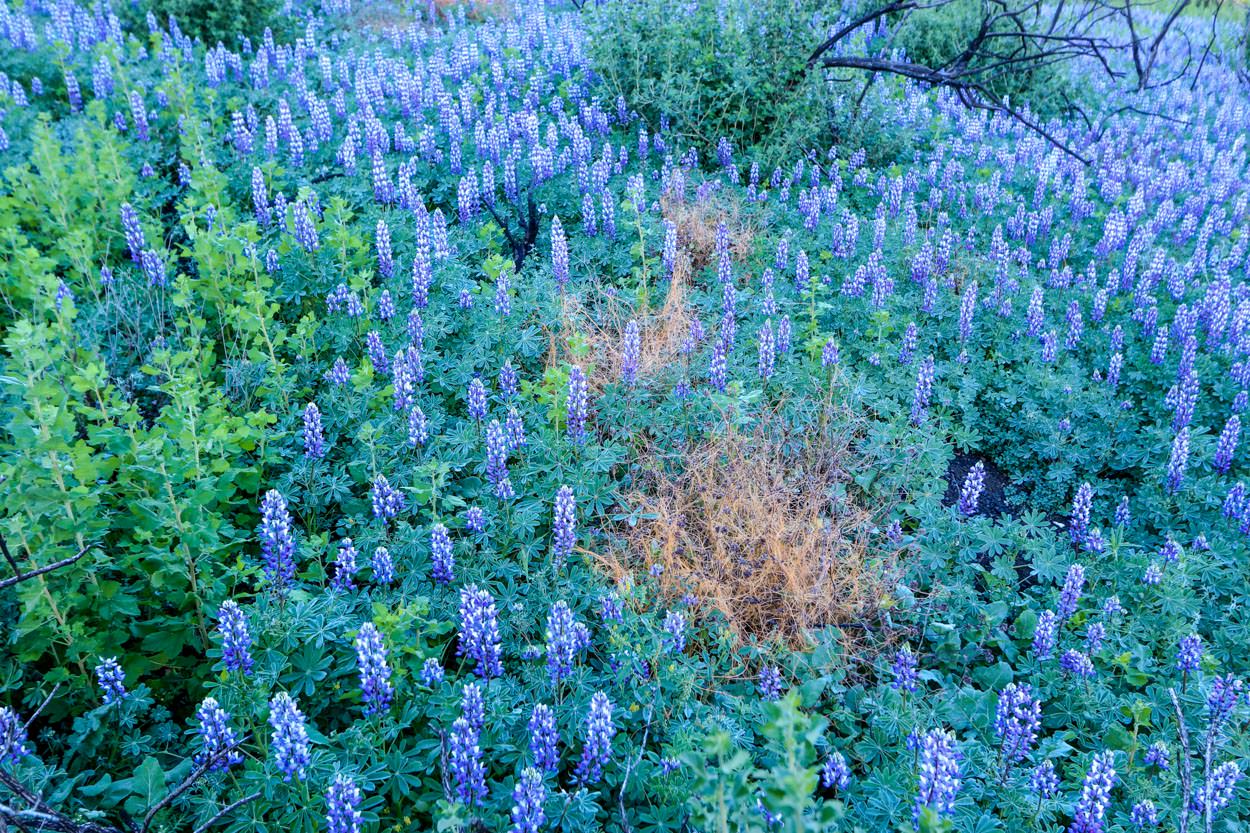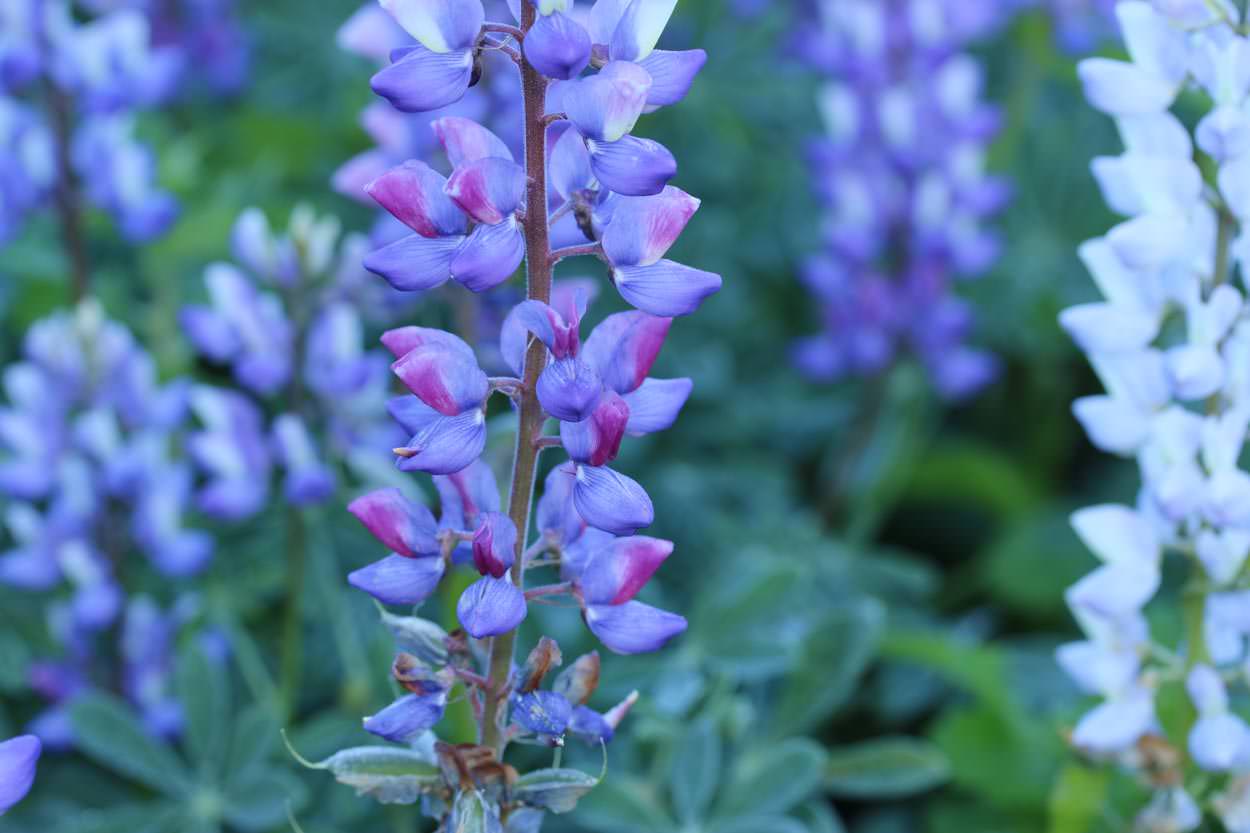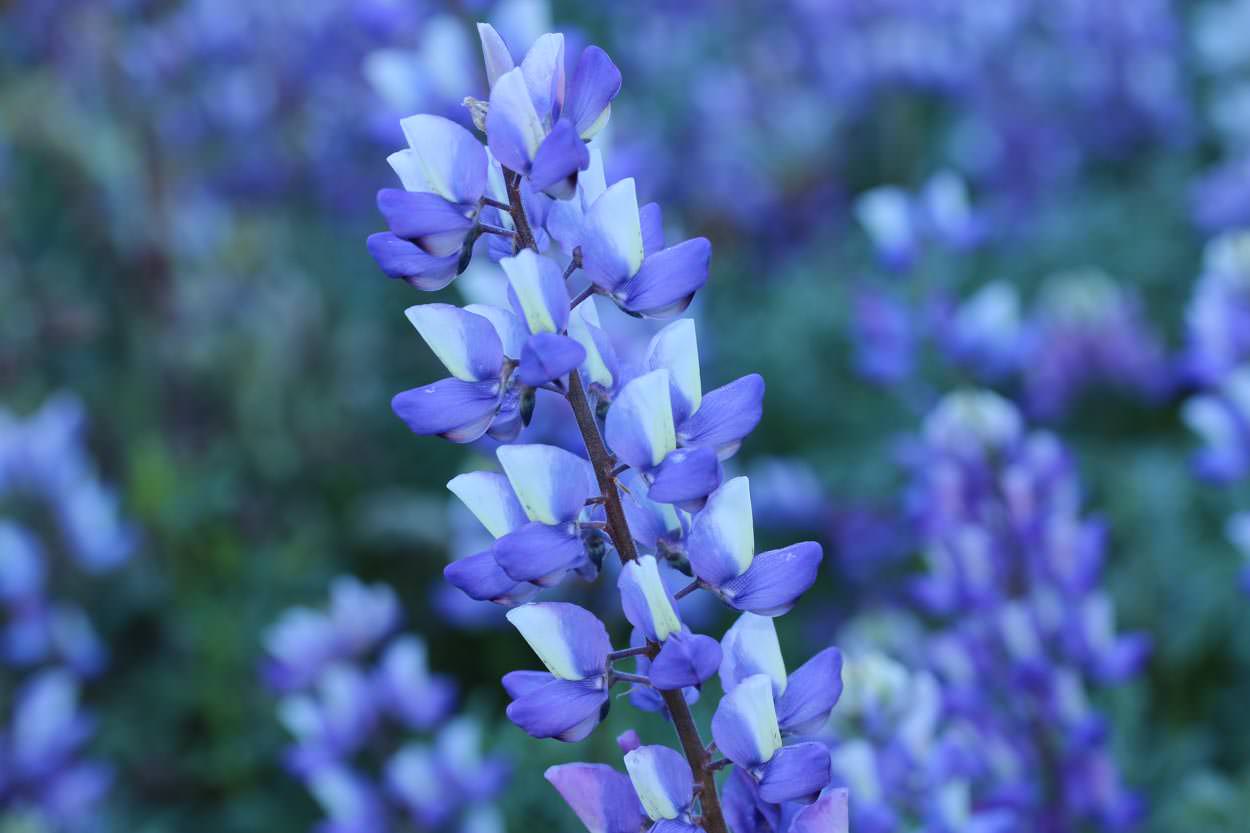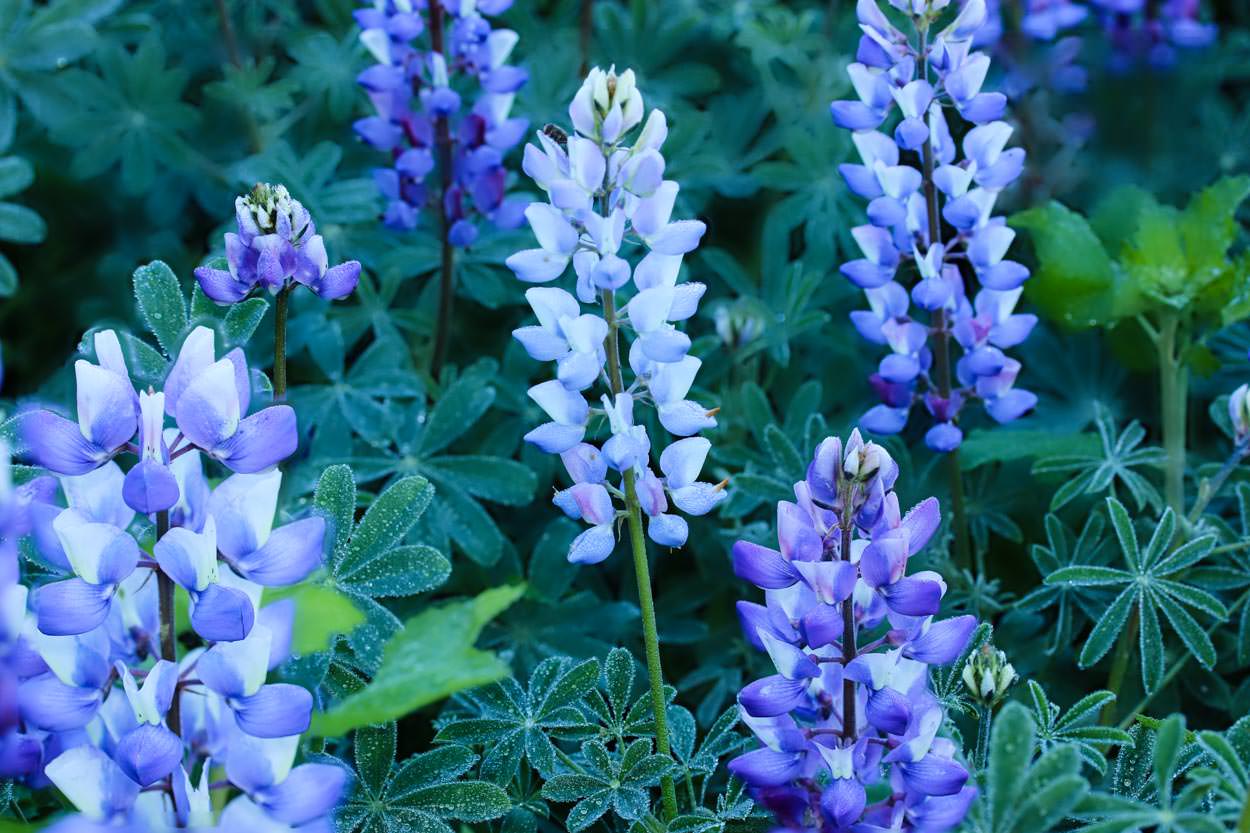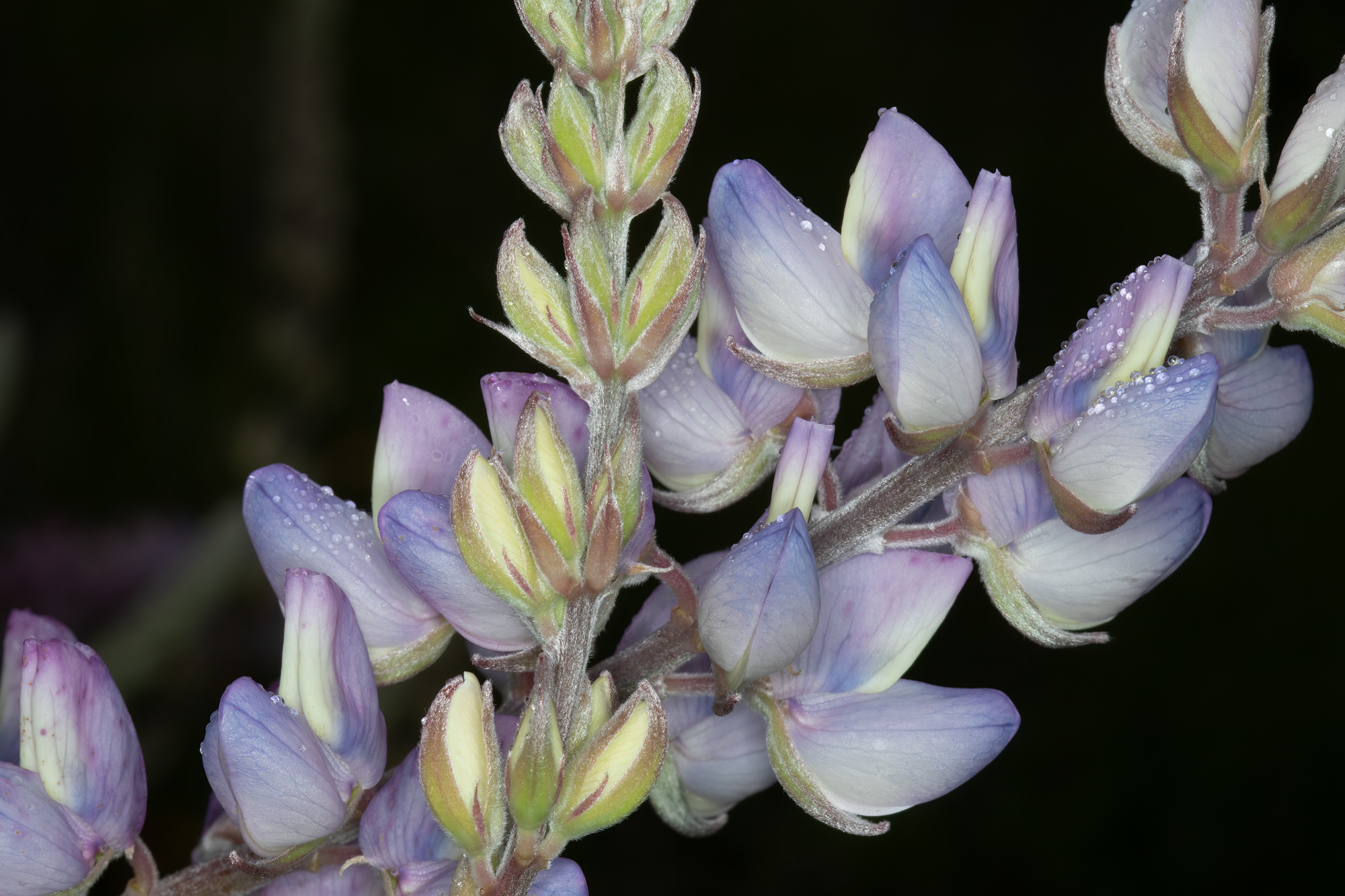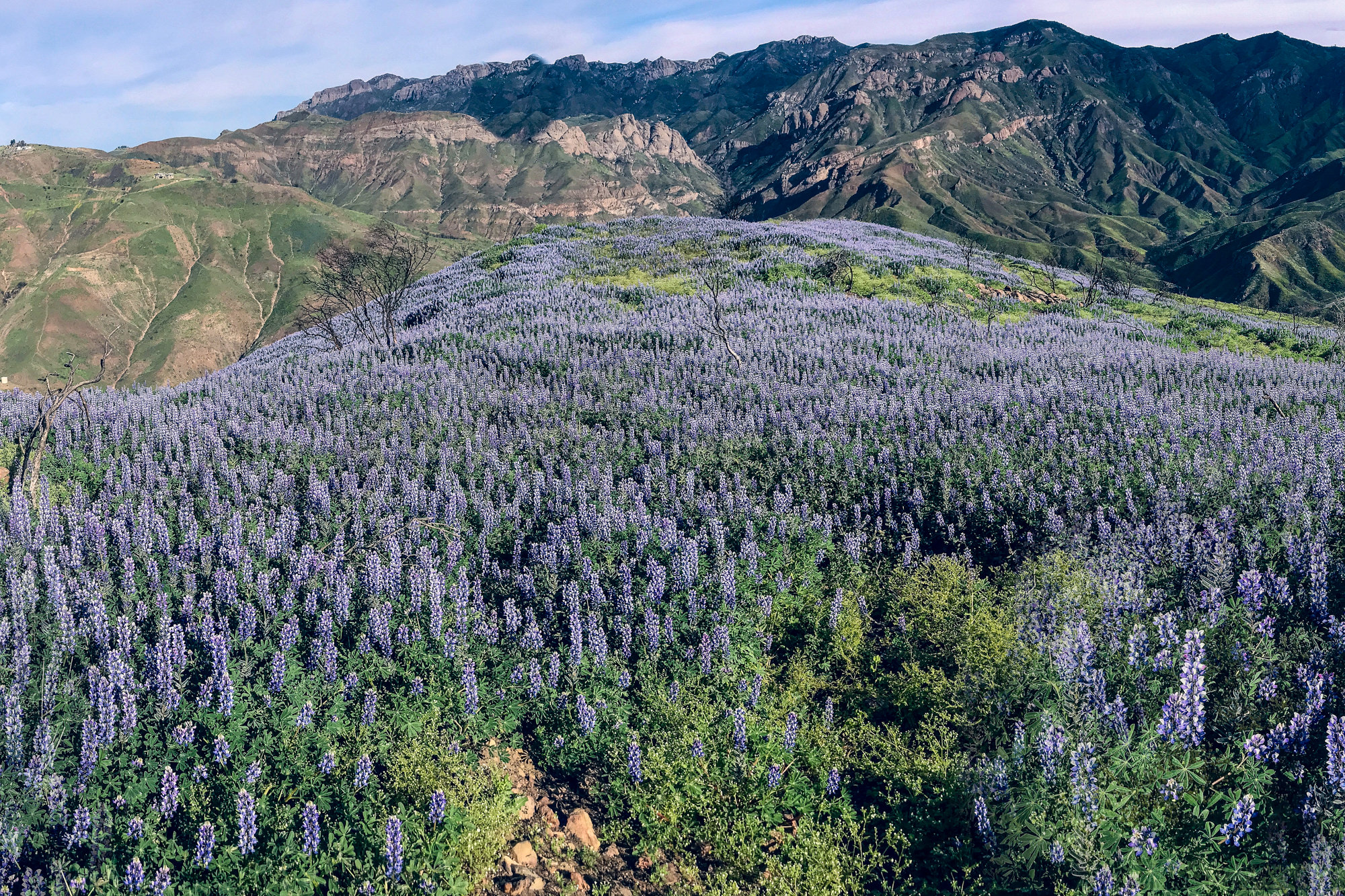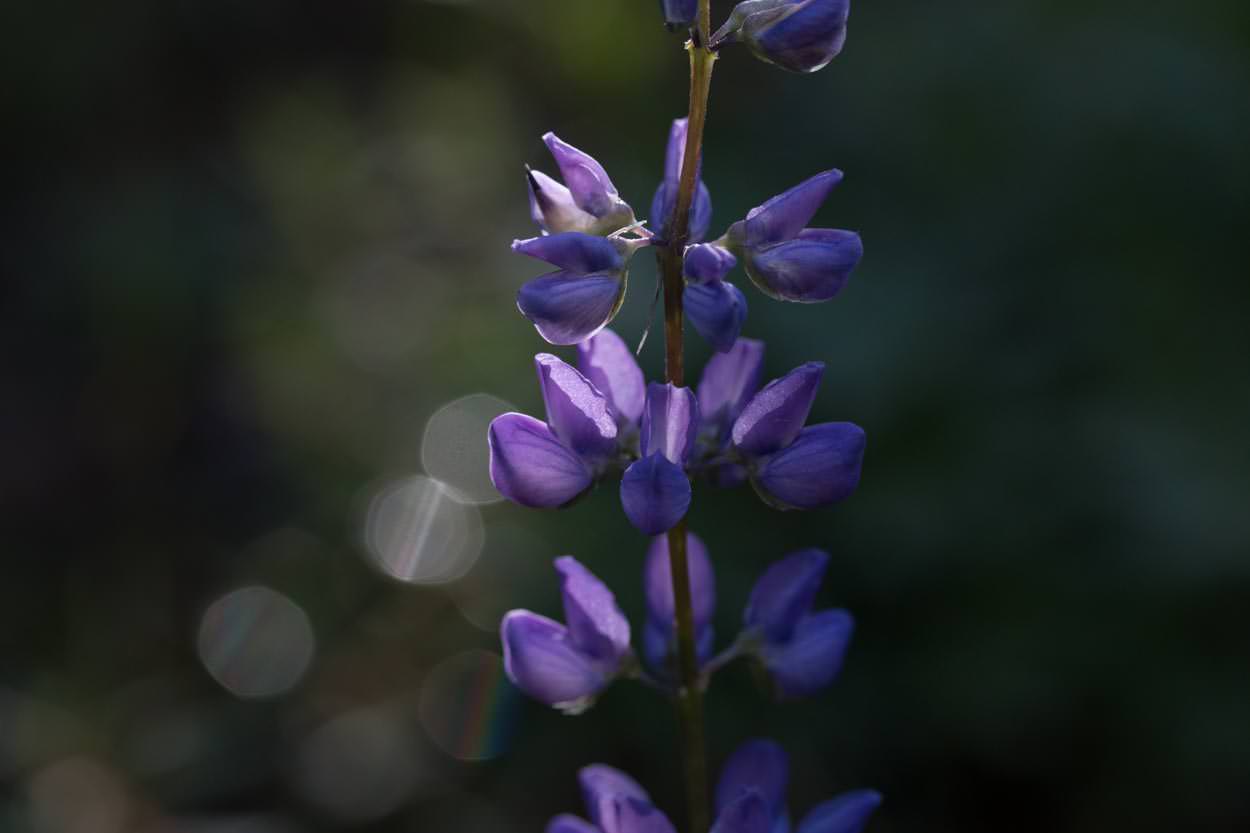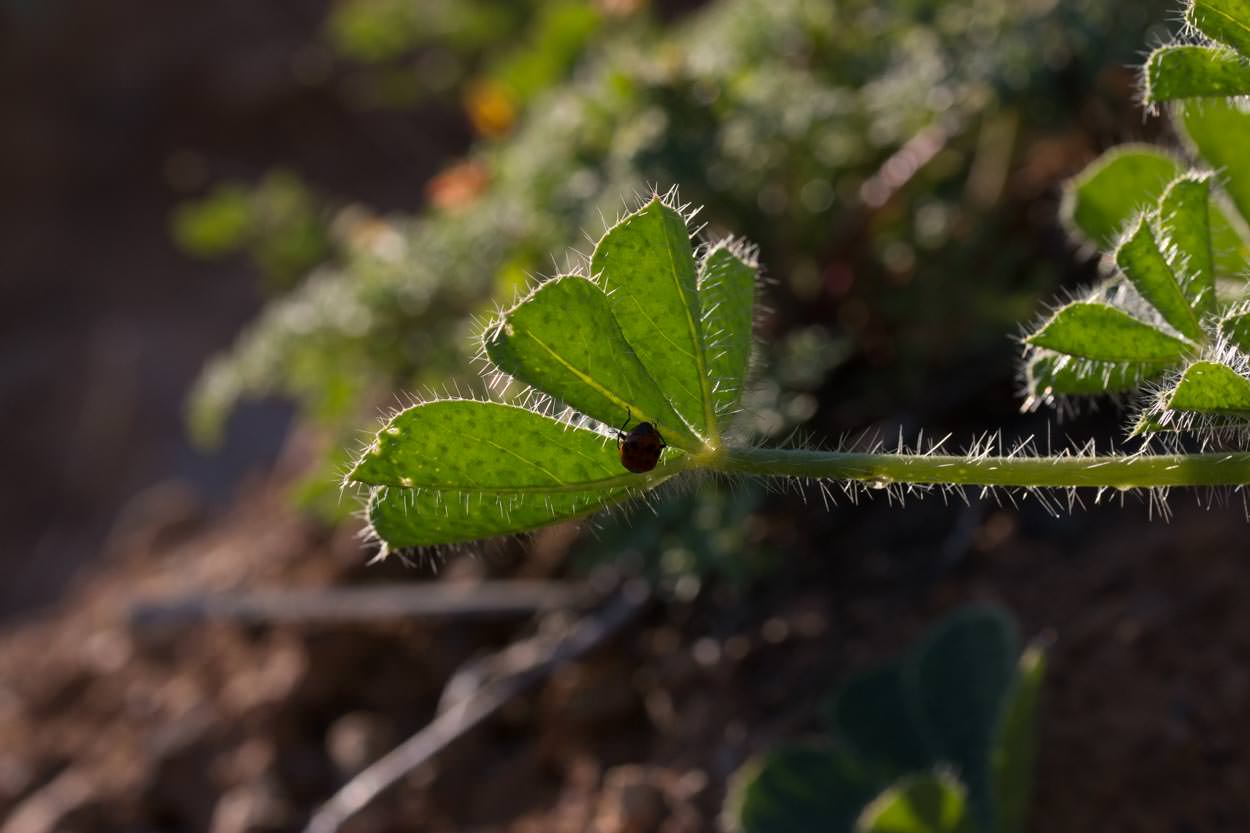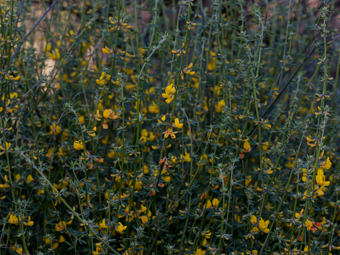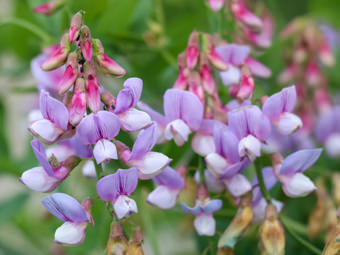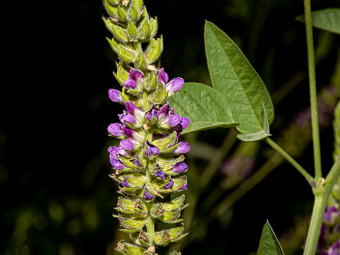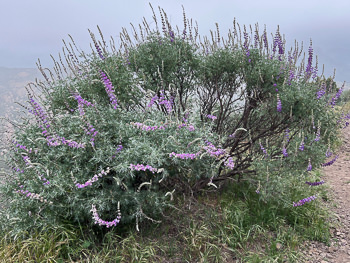Lupine
- Lupinus Species
| Common Name(s): | Lupine |
| Scientific Name: | Lupinus Species |
| Family: | Fabaceae (Legume) |
| Plant Type: | Annual or Perennial |
| Size: | up to 5 feet |
| Habitat: | Chaparral, ridges, slopes, canyons, coastal scrub |
| Blooms: | February to June |
| Fire Response: | Fire Follower |
There are 82 species of Lupine (pronounced like "pin" not "pine") in California, with about 14 commonly found in the Santa Monica mountains. Blooming time ranges from February to July. Flower colors are white to various shades of blue and reddish-purple; it is often said the flower starts as white and once pollinated changes to the deeper hues. The leaves are palmately compound, and range from 5 to 9 leaflets. The number of leaflets on an individual plant can vary, as well as within and between varieties. Pods of varying size also form on the flower stems.
The name Lupinus means "wolf," referring to the untrue notion that this plant robs nutrients from the soil. In fact, Lupine is actually known to add nitrogen back to the soil; if you want to include it in your garden, plant seed in the fall in nutrient-poor soil.
The following chart gives some distinguishing characteristics of a few of the more common varieties native to our mountains. For a more comprehensive guide, you may wish to refer to a book such as Wildflowers of the Santa Monica Mountains by Milt McAuley.
Contributed by Liz Baumann
Featured Plants in the Fabaceae (Legume) Family:
Last modified: May 16 2024 19:48:20.
Number of Images: 21
Image Size Total: 6,988,655
References:
Wildflowers of the Santa Monica Mountains, by Milt McAuleyFlowering Plants: The Santa Monica Mountains, Coastal and Chaparral Regions of Southern California, by Nancy Dale
Chumash Ethnobotany: Plant Knowledge Among the Chumash People, by Jan Timbrook
Leaf Shapes Primer - Botanical Terms for Leaves: - Link

